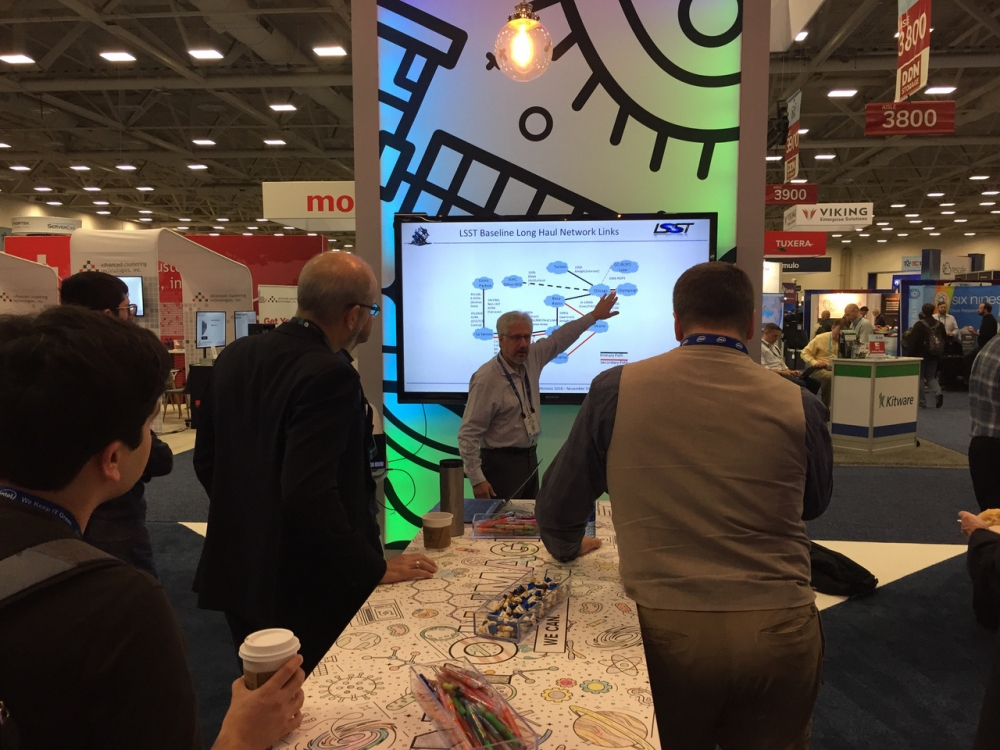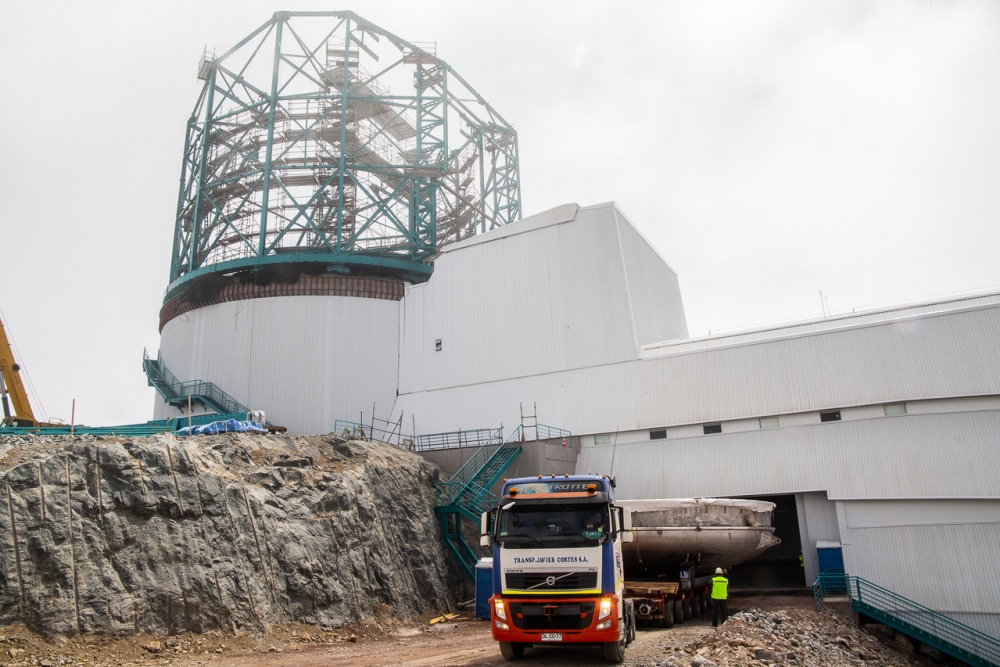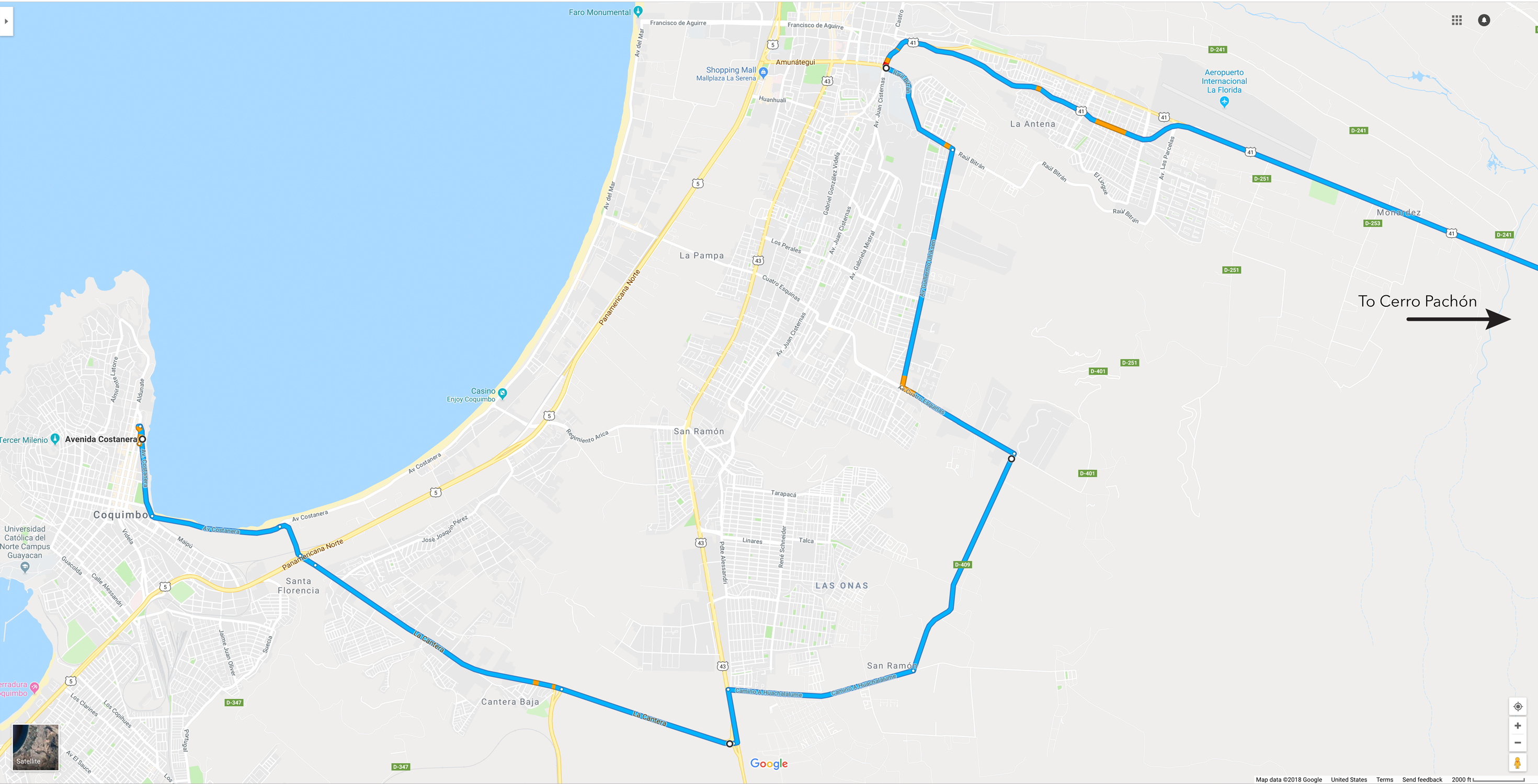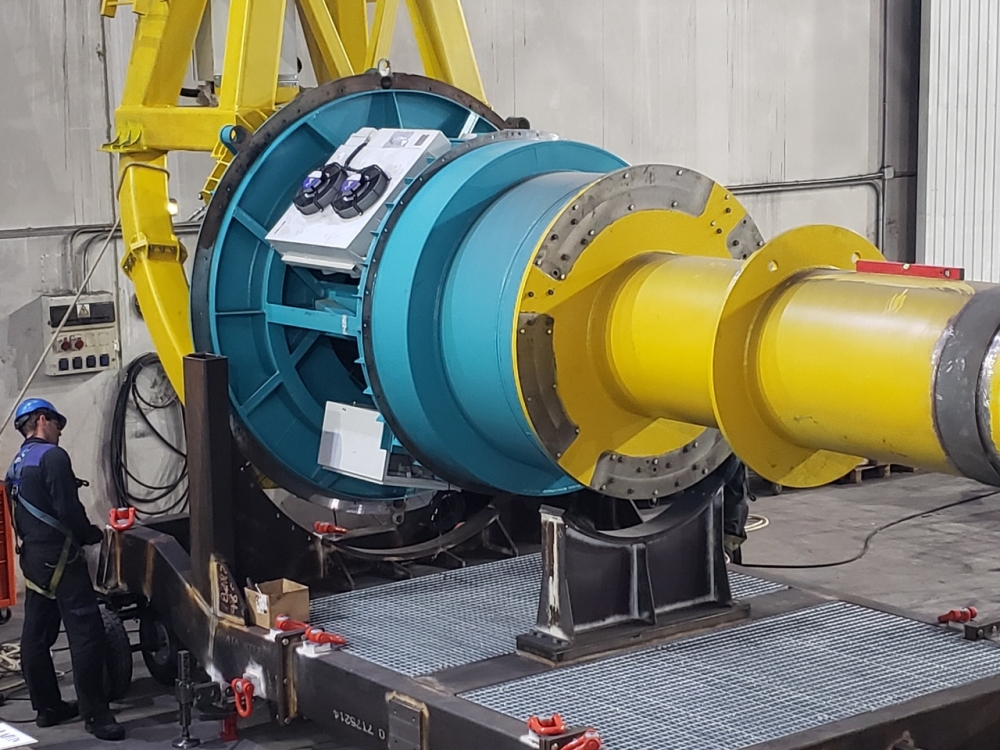A reminder: daylight saving time ended in the U.S. on Sunday, November 4th. The LSST Project uses Pacific Time as a standard, but Arizona clocks do not change, and Chile is on a different time change schedule. As a result, standing meeting times have changed for people in some locations but not others; please check with your meeting organizer to confirm the times for upcoming meetings.
The deadline for the Call for White Papers on LSST Cadence Optimization is less than a month away; white papers must be submitted by November 30, 2018. Click here for more information.
The LSST Coating Chamber arrived at the Port of Coquimbo, Chile, on October 23rd, ending a seven-week ocean voyage that began in Antwerp, Belgium. For four days after its arrival, the Coating Chamber was prepared, split into two pieces (top and bottom), and loaded onto specialized transport vehicles for the trip to the summit of Cerro Pachón. Photos are available in the LSST Gallery.
On the morning of October 25th, at the Richard F. Caris Mirror Lab on the University of Arizona campus, the LSST Primary/Tertiary Mirror (M1M3) was successfully lifted out of its transport container and onto the M1M3 Cell. Read more about this milestone and view a video of the lift in this recent news post.
The LSST Secondary Mirror (M2), which was recently completed in Rochester, NY, has begun its journey to Chile. The mirror and its associated components were loaded and secured onto three trailers on October 30th, and transported to the Port of Albany, NY. The trailers and cargo are currently in storage at the port, awaiting the arrival of theBBC Challenger, which is scheduled to arrive on November 11th. Photos of M2 traveling by truck from Rochester to Albany are available in the LSST Gallery.
The 50th Annual Meeting of the AAS Division of Planetary Sciences (DPS) was held in Knoxville, TN, on October 21-26. The LSST Solar System Science Collaboration (SSSC) held a workshop at the meeting, attended by approximately 55 people, that included status updates on LSST Project and SSSC activities. A photo of the workshop is available in the LSST Gallery, and presentations are linked from this page.
LSST CORPORATION NEWS
The LSST Corporation held an Institutional and Executive Board Meeting in Tucson, AZ, on October 24-25. In attendance were approximately 25 Board Members, International Contributors, LSST Corporation and Project representatives, and other stakeholders. The two-day meeting included a Project update from LSST Director Steve Kahn and LSST Deputy Director Zeljko Ivezic, and a pre-operations and commissioning report from Acting LSST Operations Director Bob Blum. LSST Corporation mission-related updates and activities were presented that focused on LSST Operations and the Corporation’s Fund-Development Program.
PERSONNEL NEWS
Open positions available with LSST, including two Administrative Assistant positions, are listed at this link.
UPCOMING MEETINGS with LSST INVOLVEMENT
(those with asterisk* are LSSTC funded):
2018 | |
November 11-15 | 28th Annual Astronomical Data Analysis Software and Systems (ADASS) Meeting, College Park, MD |
November 12-15 | Supercomputing 2018, Dallas, TX |
December 17-21 | South American Workshop on Cosmology in the LSST Era, Sao Paulo, Brazil |
2019 | |
January 6-10 | AAS 233rd Meeting, Seattle, WA |
January 16-17 | AMCL Meeting, Tucson, AZ |
January 22-24 | LSST Science Advisory Committee (SAC) Meeting, Princeton, NJ |
May 20-23 | LSST@Asia, Sydney, Australia* |
NOTICIAS DEL PROYECTO & CIENTIFICAS
Un recordatorio: el horario de verano terminó en Estados Unidos el domingo 4 de noviembre. El Proyecto LSST usa la Hora del Pacífico como estándar, pero los relojes de Arizona no cambian, y Chile está en un horario de cambio de hora diferente. Como resultado, los tiempos de reuniónes permanentes han cambiado para las personas en algunos lugares, pero no en otros; Por favor, consulte con el organizador de la reunión para confirmar los horarios de las próximas reuniones.
La fecha límite para la Convocatoria de Libros Blancos sobre Optimización de Cadencia LSST es en menos de un mes; los libros blancos deben enviarse antes del 30 de noviembre de 2018. Haga clic aquí para obtener más información.
La Cámara de Recubrimiento LSST llegó al Puerto de Coquimbo, Chile, el 23 de octubre, finalizando un viaje por el océano de siete semanas que comenzó en Amberes, Bélgica. Durante cuatro días después de su llegada, la Cámara de revestimiento se preparó, se dividió en dos partes (arriba y abajo) y se cargó en vehículos de transporte especializados para el viaje a la cima del Cerro Pachón. Las fotos están disponibles en la Galería LSST
En la mañana del 25 de octubre, en el laboratorio de espejos Richard F. Caris campus de la Universidad de Arizona, el espejo Primario / Terciario (M1M3) del LSST fue retirado con éxito de su contenedor de transporte y se llevó a la celda M1M3. Lea más sobre este hito y vea un video del trabajo de levante en esta reciente publicación de noticias.
El espejo secundario LSST (M2), que se terminó recientemente en Rochester, Nueva York, ha comenzado su viaje a Chile. El espejo y sus componentes asociados fueron cargados y asegurados en tres remolques el 30 de octubre, y transportados al Puerto de Albany, NY. Los remolques y la carga están actualmente almacenados en el puerto, a la espera de la llegada de la BBC Challenger, el cual está programado para llegar el 11 de noviembre. Las fotos de M2 viajando en camión desde Rochester a Albany están disponibles en la Galería LSST.
La 50ª Reunión Anual de la División de Ciencias Planetarias (DPS) de AAS se celebró en Knoxville, TN, del 21 al 26 de octubre. El LSST Solar System Science Collaboration (SSSC) realizó un taller en la reunión, al que asistieron aproximadamente 55 personas, que incluyó actualizaciones de estado sobre el proyecto LSST y las actividades del SSSC. Una foto del taller está disponible en la Galería LSST, y las presentaciones están vinculadas desde esta página.
NOTICIAS DE LA CORPORACION LSST
La Corporación LSST celebró una reunión de la Junta Ejecutiva e Institucional en Tucson, AZ, del 24 al 25 de octubre. Asistieron aproximadamente 25 miembros de la Junta, colaboradores internacionales, representantes de LSST Proyecto y Corporación, y otras partes interesadas. La reunión de dos días incluyó una actualización del Proyecto por parte del Director de LSST, Steve Kahn y el Director Adjunto de LSST, Zeljko Ivezic, más un informe pre-operaciones y comisión de Director de Operaciones en funciones de LSST, Bob Blum. Se presentaron actualizaciones y actividades relacionadas con la misión de la Corporación LSST que se enfocaron en las Operaciones de LSST y el Programa de Desarrollo de Fondos de la Corporación.
NOTICIAS DEL PERSONAL
Las posiciones abiertas disponibles de trabajo con LSST, incluidas dos posiciones de Asistente Administrativo, se enumeran en este enlace.
PRÓXIMAS REUNIONES QUE INVOLUCRAN A LSST
(aquellas con asterisco * están financiadas por LSSTC):
2018 | |
Noviembre 11-15 | 28th Reunión anual de análisis de datos astronómicos, software y sistemas. (ADASS), College Park, MD |
Noviembre 12-15 | Supercomputing 2018, Dallas, TX |
Diciembre 17-21 | South American Workshop on Cosmology in the LSST Era, Sao Paulo, Brazil |
2019 | |
Enero 6-10 | AAS 233rd Meeting, Seattle, WA |
Enero 16-17 | AMCL Meeting, Tucson, AZ |
Enero 22-24 | LSST Science Advisory Committee (SAC) Meeting, Princeton, NJ |
Mayo 20-23 | LSST@Asia, Sydney, Australia* |










